Introduction
In the competitive world of real estate, captivating photos are not just an advantage; they’re a necessity. The journey to creating these visually appealing images begins with effective property staging. Staging a property for photography goes beyond mere cleaning or decorating; it’s about strategically presenting a lifestyle that potential buyers can envision themselves in. This article, “Picture-Perfect Properties: Essential Staging Tips for Stunning Real Estate Photos”, is your guide to transforming spaces into photogenic masterpieces. We’ll dive into the fundamentals of property staging, discuss the importance of decluttering and depersonalizing, explore ways to highlight a property’s best features, delve into the effective use of lighting and color schemes, and finally, understand the value of collaborating with staging professionals. Whether you’re a real estate agent, homeowner, or staging enthusiast, these insights will help you enhance your property’s visual appeal, ensuring that it stands out in a crowded market.
Understanding the Basics of Property Staging
Property staging is an art form that plays a critical role in the real estate industry. It’s about creating a setting that accentuates a property’s strengths, minimizes its weaknesses, and appeals to the broadest audience. The goal is to make potential buyers feel at home from the moment they view the photos.
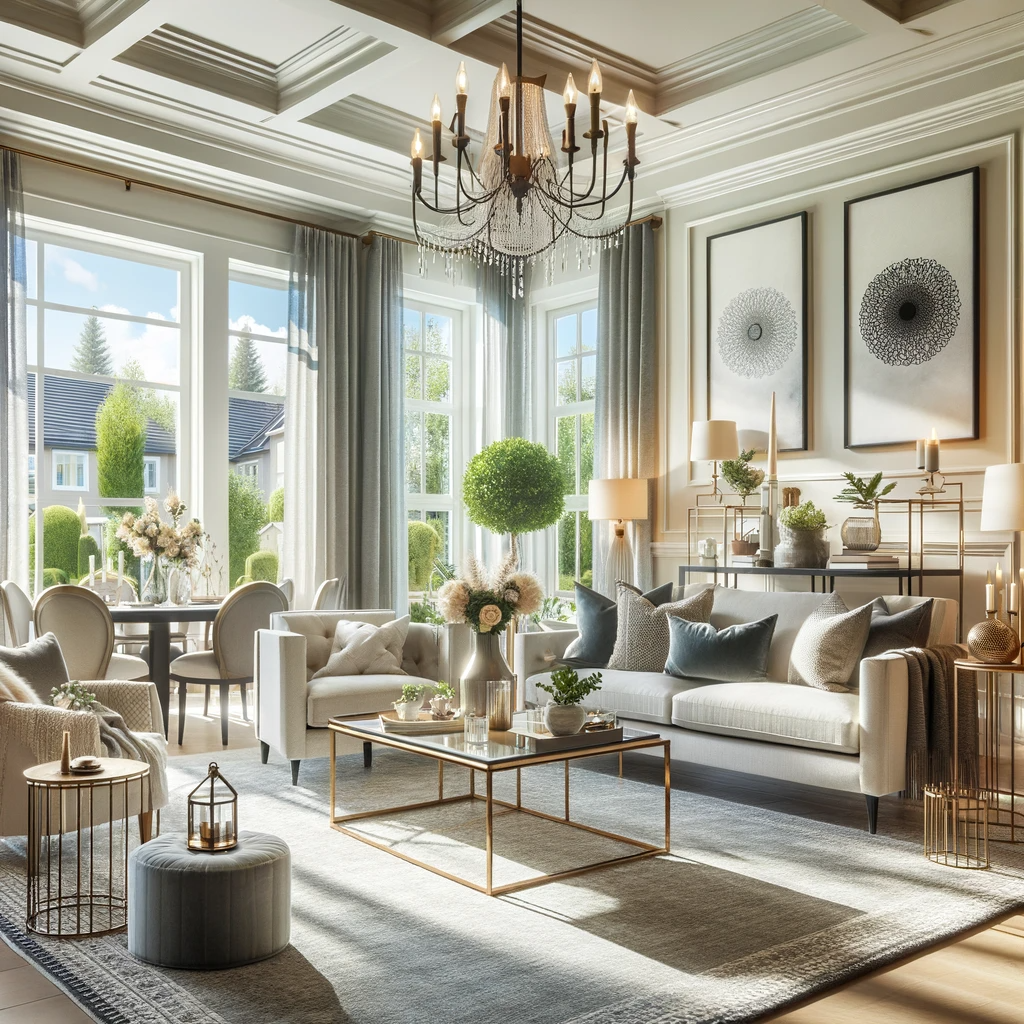
The Purpose of Staging
Staging is not just about decorating; it’s about strategic marketing. It helps potential buyers visualize the property as their future home. Well-staged properties often sell faster and for higher prices because they make a memorable first impression.
Key Elements of Effective Staging
- Furniture Arrangement: Furniture should complement the space without overwhelming it. The arrangement must highlight the functionality of each room and create an open, welcoming atmosphere.
- Neutral Decor: Neutral colors and decor help buyers envision their own belongings in the space. This doesn’t mean the space should lack personality; rather, it should have a universally appealing style.
- Accentuating Features: Whether it’s a fireplace, a large window, or high ceilings, staging should draw attention to the best features of the property.
- Creating a Sense of Lifestyle: Good staging tells a story about the lifestyle that the property offers. It’s about selling a dream – be it cozy family living, a chic urban lifestyle, or a peaceful retreat.
The Impact on Real Estate Photography
In real estate photography, staging sets the stage for success. It ensures that the photos convey a sense of warmth and potential, making them more effective in attracting buyer interest. By investing time and effort into staging, sellers can significantly enhance the appeal of their property in the competitive real estate market.
Decluttering and Depersonalizing
A crucial step in preparing a property for real estate photography is decluttering and depersonalizing. This process is about more than just tidying up; it’s about creating a clean, neutral canvas that appeals to a wide range of buyers.
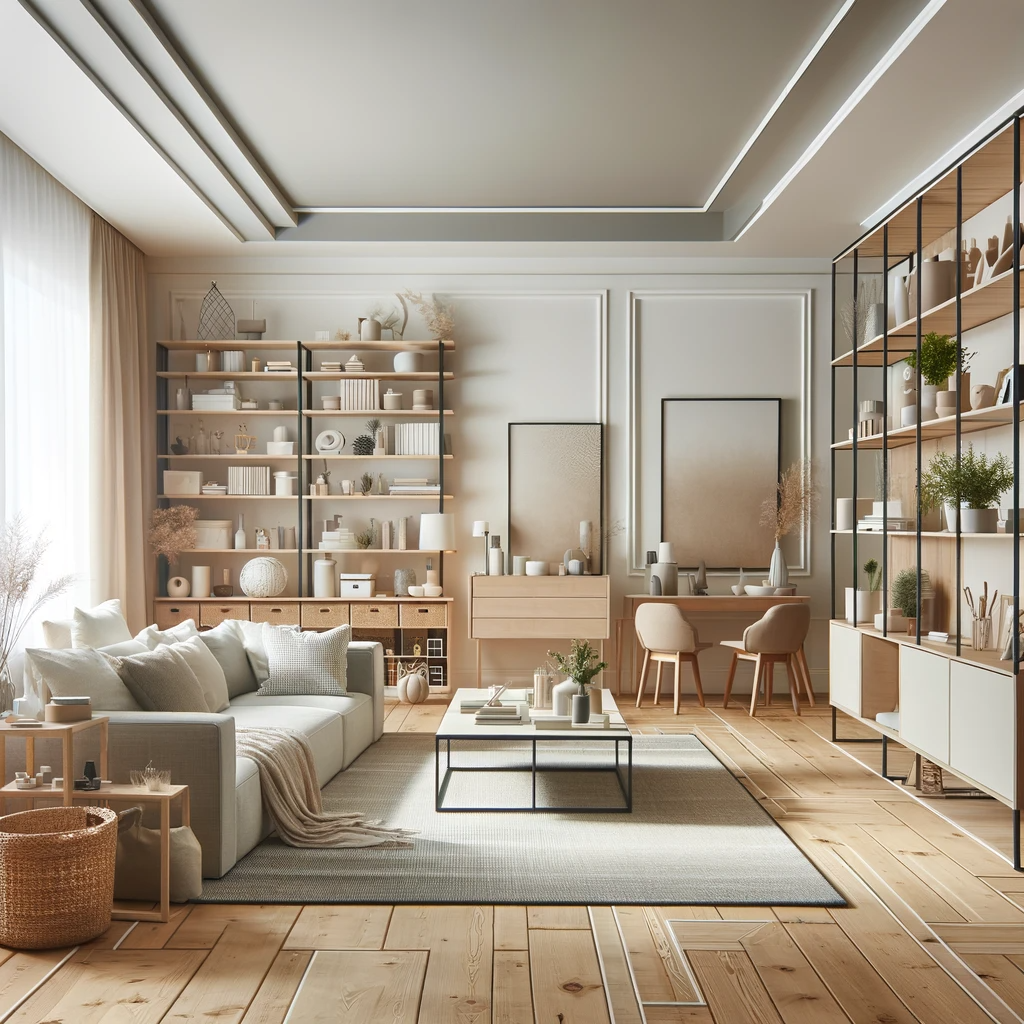
Why Declutter?
Clutter distracts from the property’s features. Excess items can make spaces appear smaller and less inviting. Decluttering helps to open up the room, allowing buyers to focus on the property itself, not the items within it.
The Art of Depersonalizing
Depersonalizing is about removing personal items like family photos, unique collectibles, or bold artwork. The goal is to create a space where buyers can easily imagine their own lives and belongings, without being influenced by the current owner’s personal style.
Tips for Effective Decluttering and Depersonalizing
- Start with Storage Areas: Begin by organizing closets and storage spaces. Buyers will check these areas, so they should be tidy and well-organized.
- Keep Countertops Clear: In kitchens and bathrooms, clear countertops as much as possible. This creates a sense of space and cleanliness.
- Neutralize the Decor: Replace any bold, bright decor with more neutral, subtle alternatives. This doesn’t mean the space should be bland; a few well-chosen accessories can add warmth without overwhelming the buyer.
- Focus on Flow: Ensure that there is a clear pathway through each room. This helps to demonstrate the functionality of the space and makes it appear larger.
By decluttering and depersonalizing, sellers can ensure that their property photographs beautifully, attracting a wider range of potential buyers.
Highlighting Key Features Through Staging
Effective staging is not just about making a property look neat and attractive; it’s about strategically highlighting its key features. This is crucial in real estate photography, as it draws potential buyers’ attention to the best aspects of the property.
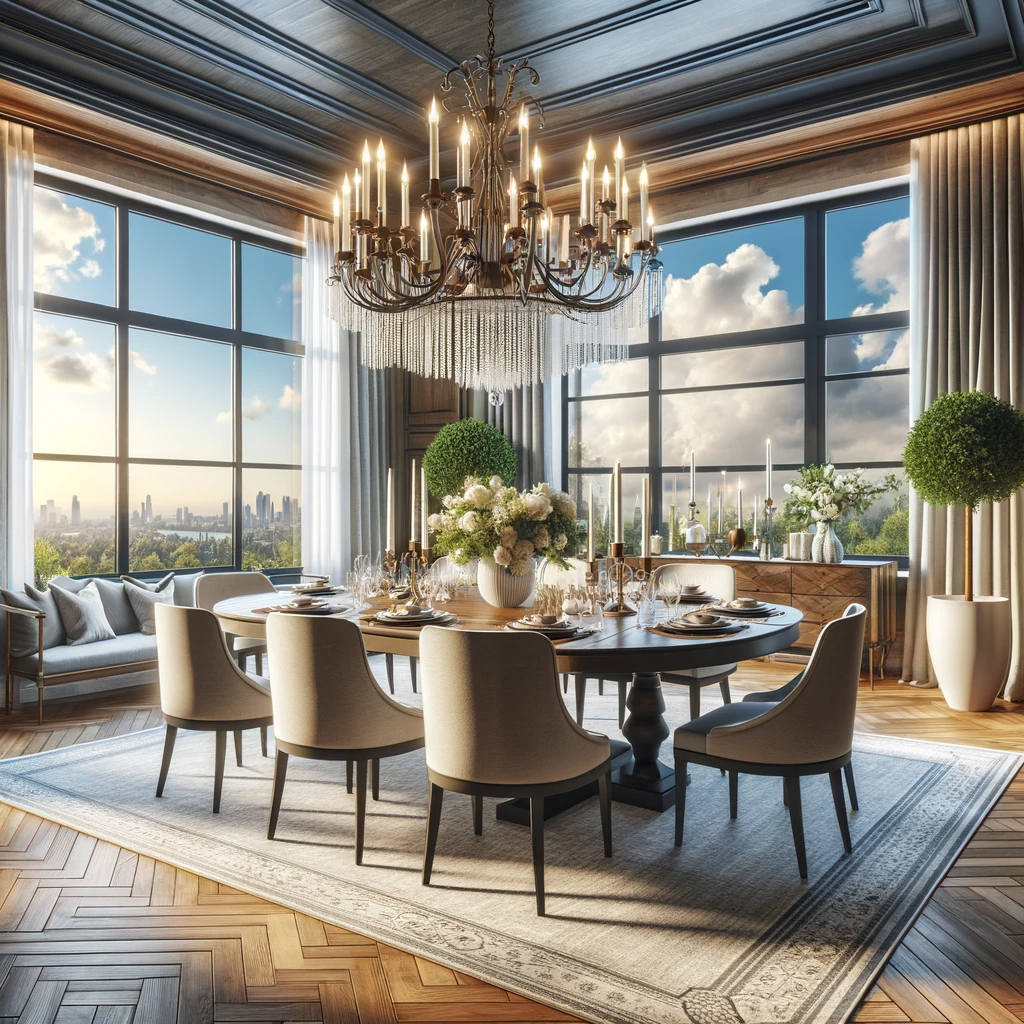
Identifying Key Features
Every property has unique selling points, whether it’s a cozy fireplace, a spacious backyard, or a gourmet kitchen. Identifying these features is the first step in highlighting them effectively.
Techniques for Highlighting Features
- Use of Lighting: Proper lighting can dramatically enhance key features. Natural light is always best, but additional lighting can be used to spotlight certain areas.
- Strategic Furniture Placement: Arrange furniture to draw attention to these features. For example, a beautiful reading nook can be highlighted by a comfortable chair and a stylish lamp.
- Accent Decor: Use decor to accentuate features. A vase of flowers on a dining table or artfully arranged cushions on a sofa can make these features stand out.
- Creating a Focal Point: Every room should have a focal point. Staging should be arranged in a way that naturally draws the eyes to these focal points, whether it’s a beautiful window view or an elegant staircase.
The Impact on Photography
When these features are effectively highlighted, they become the stars of the real estate photos. They capture the imagination of potential buyers, helping them to see the unique value of the property.
By focusing on these key features, sellers can ensure their property not only looks good in photos but also stands out in the real estate market.
Lighting and Color Schemes
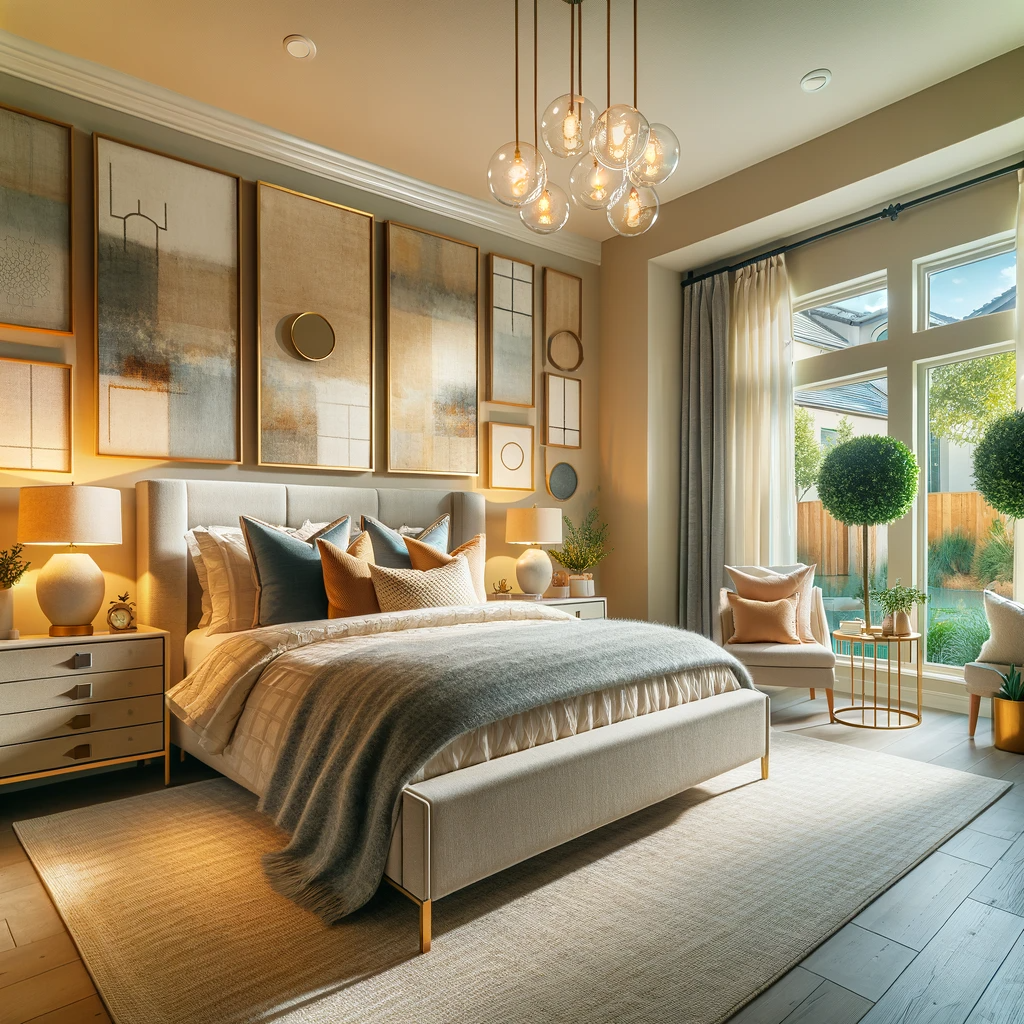
Lighting and color schemes play a pivotal role in property staging, significantly influencing how a property is perceived in photographs. The right combination can create an inviting atmosphere that appeals to potential buyers.
The Importance of Lighting in Staging
Good lighting can transform a space, making it appear brighter, larger, and more welcoming. Natural light should be maximized wherever possible. For areas with limited natural light, additional lighting can be strategically placed to enhance the space.
Choosing the Right Color Scheme
The color scheme of a property can impact a buyer’s emotional response. Neutral colors are generally recommended for staging, as they appeal to a wider audience. However, subtle use of colors can add warmth and character to the space.
Tips for Effective Use of Lighting and Colors
- Maximize Natural Light: Open curtains and blinds to let in natural light. This not only brightens the space but also showcases the property’s views.
- Layered Lighting: Use a combination of ambient, task, and accent lighting to add depth and interest to rooms.
- Consistent Color Palette: Use a consistent color palette throughout the property to create a cohesive look. This doesn’t mean every room should be the same color, but the colors should complement each other.
- Accent Colors: Use accent colors in decor items like pillows, artwork, or rugs to add visual interest without overwhelming the space.
By carefully considering lighting and color schemes, sellers can significantly enhance the photographic appeal of their property, making it more attractive to potential buyers.
Working with Staging Professionals
While DIY staging can be effective, working with professional stagers can elevate a property’s appeal to new heights. These experts bring a wealth of experience, an eye for design, and an understanding of what sells in the real estate market.
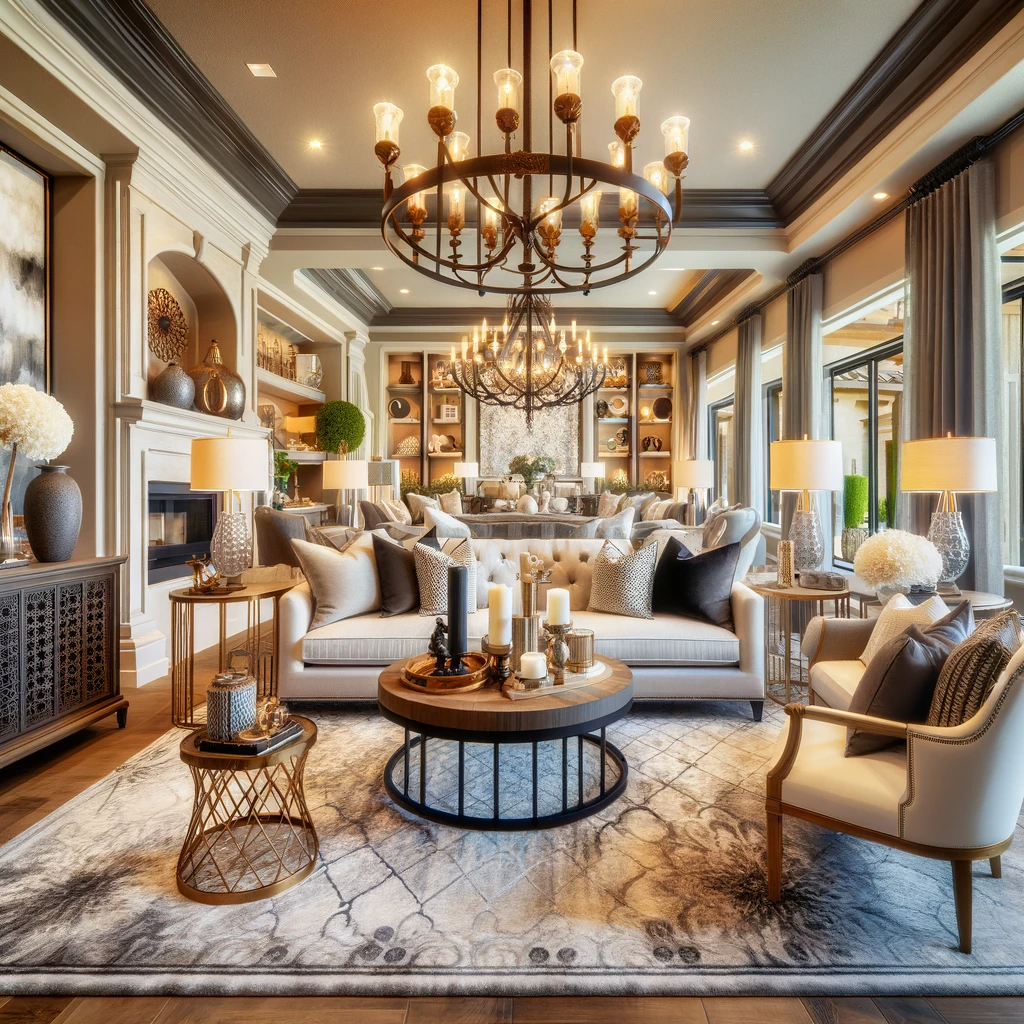
The Benefits of Professional Staging
Professional stagers know how to create spaces that resonate with buyers. They have access to a range of furniture, accessories, and lighting options that can transform any property into a buyer’s dream.
When to Consider a Professional Stager
- High-End Properties: For luxury properties, professional staging can be particularly beneficial in highlighting the opulence and exclusivity of the space.
- Vacant Properties: Empty properties can feel soulless and small. Stagers can bring these spaces to life, helping buyers visualize the potential.
- Unique or Challenging Spaces: Properties with unusual layouts or challenging features can benefit from a professional’s touch to maximize appeal.
Collaborating with Stagers
Working with a stager is a collaborative process. It’s important for sellers to communicate their goals and expectations while also trusting the stager’s expertise and vision.
The Impact on Real Estate Photography
Stagers know how to prepare a property for the camera. Their staging techniques ensure that each photograph showcases the property in the best possible light, making a significant impact on the property’s market appeal.
In conclusion, whether you opt for DIY staging or professional assistance, the goal remains the same: to present the property in a way that attracts buyers and generates a swift, profitable sale.
Conclusion
In the world of real estate, first impressions are paramount, and nothing makes a stronger impression than beautiful, well-staged photographs. Through strategic decluttering, depersonalizing, and highlighting key features, sellers can significantly enhance their property’s visual appeal. The incorporation of effective lighting and color schemes further amplifies this appeal, making the property not just a space, but a potential home for buyers.
Working with professional stagers can offer an additional edge, especially in competitive markets. These experts bring a level of sophistication and finesse to the staging process, ensuring that every photograph captures the essence and potential of the property.
Remember, successful real estate marketing is about selling a lifestyle, not just a space. By following these staging tips, sellers and real estate agents can create compelling, attractive listings that stand out. Whether you’re a seasoned professional or a first-time seller, these staging strategies will help you showcase your property at its best, ensuring a quicker sale at a better price.







0 Comments